Introduction
Franchise ownership can be a rewarding venture, but it comes with its own set of complexities, particularly when it comes to understanding and managing royalty fees. These fees, typically a percentage of gross sales, are vital for maintaining brand integrity and accessing essential support services from the franchisor. As aspiring franchisees navigate this intricate landscape, grasping the nuances of royalty fees becomes crucial not only for financial planning but also for long-term success.
With average royalty fees projected between 5% and 7% in 2024, the implications on profitability and cash flow can be significant. This article delves into the various aspects of royalty fees—from their calculation and impact on profit margins to negotiation strategies and budgeting techniques—equipping future franchise owners with the knowledge they need to make informed decisions and thrive in a competitive market.
Understanding Franchise Fees: The Role of Royalty Fees
In the domain of franchising, licensing charges play a crucial role, representing a percentage of a franchisee’s gross sales paid to the franchisor for the ongoing use of the brand and its associated support services. As of 2024, average royalty charges in franchising are anticipated to vary from 5% to 7%, although specific amounts can differ significantly based on the business model and industry sector.
For prospective business owners, understanding the consequences of these charges is crucial, as they directly influence profitability and the overall financial well-being of the enterprise. Royalty charges are not simply operational expenses; they also support essential marketing initiatives and brand development activities that increase the worth of the network as a whole.
Patrick Pacious, President and Chief Executive Officer, emphasizes that ‘the value created through effective brand management and support services is essential for franchisee success.’ Therefore, it is essential for prospective franchisees to closely examine how these costs will affect their revenue projections and to integrate them into their overall business plan.
A pertinent case study is the global expansion efforts of Choice Hotels, which experienced a 33% rise in its international units pipeline, showcasing how effective brand management can result in growth despite the expenses related to licensing. By understanding this fundamental aspect of franchising, you can better prepare for the financial realities that accompany joining a business network.
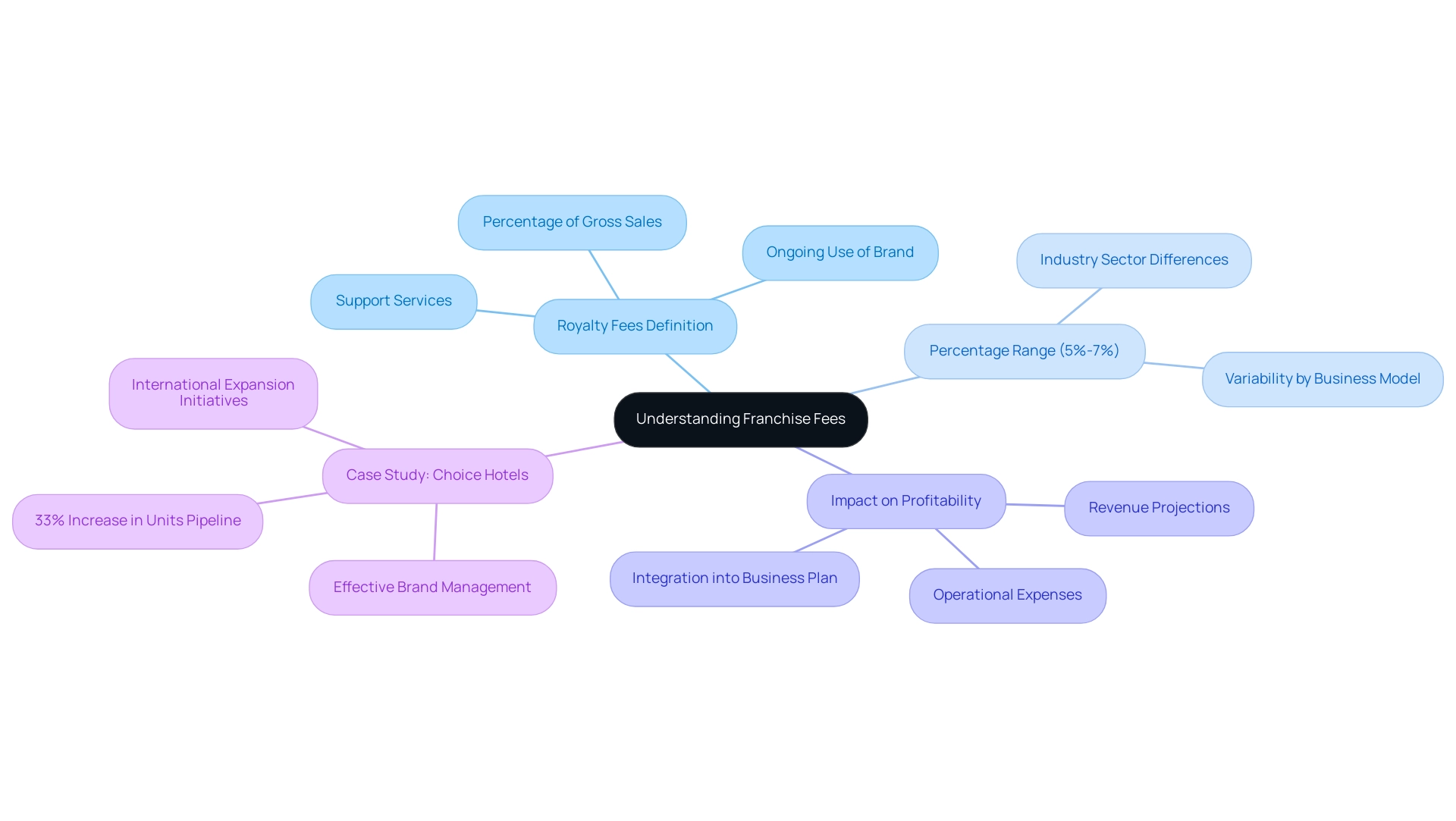
Calculating Royalty Fees: Key Factors and Considerations
Determining compensation costs is vital for franchisees and includes several important elements. Essential elements consist of the business’s established fee percentage, the franchisee’s gross sales, and any extra charges like marketing contributions. According to expert Jane Doe, ‘Grasping the subtleties of fee calculations can greatly influence a licensee’s profitability.’ The formula for calculating the fee is straightforward: multiply the total gross sales by the percentage. For example, if a licensee reports total sales of $500,000 and the commission rate is established at 5%, the yearly payment would total $25,000.
Statistics indicate that licensed businesses generally impose commission charges varying from 4% to 8% of total sales, depending on the sector and brand reputation. Franchisees must also remain vigilant regarding potential sales fluctuations, as these can directly affect the total royalty fees due. Additionally, it’s imperative to meticulously review the agreement for specific clauses that could influence fee calculations. For instance, some businesses implement tiered rates based on sales volume, or offer performance-based discounts, which can significantly influence the financial landscape for those operating under the brand. A case study on a successful fast-food franchise revealed that those who understood and adapted to their royalty structures were able to increase their profitability by an average of 15%. By grasping these calculations and their underlying factors, franchisees can more effectively manage their cash flow and align their financial strategies with their overarching business goals.
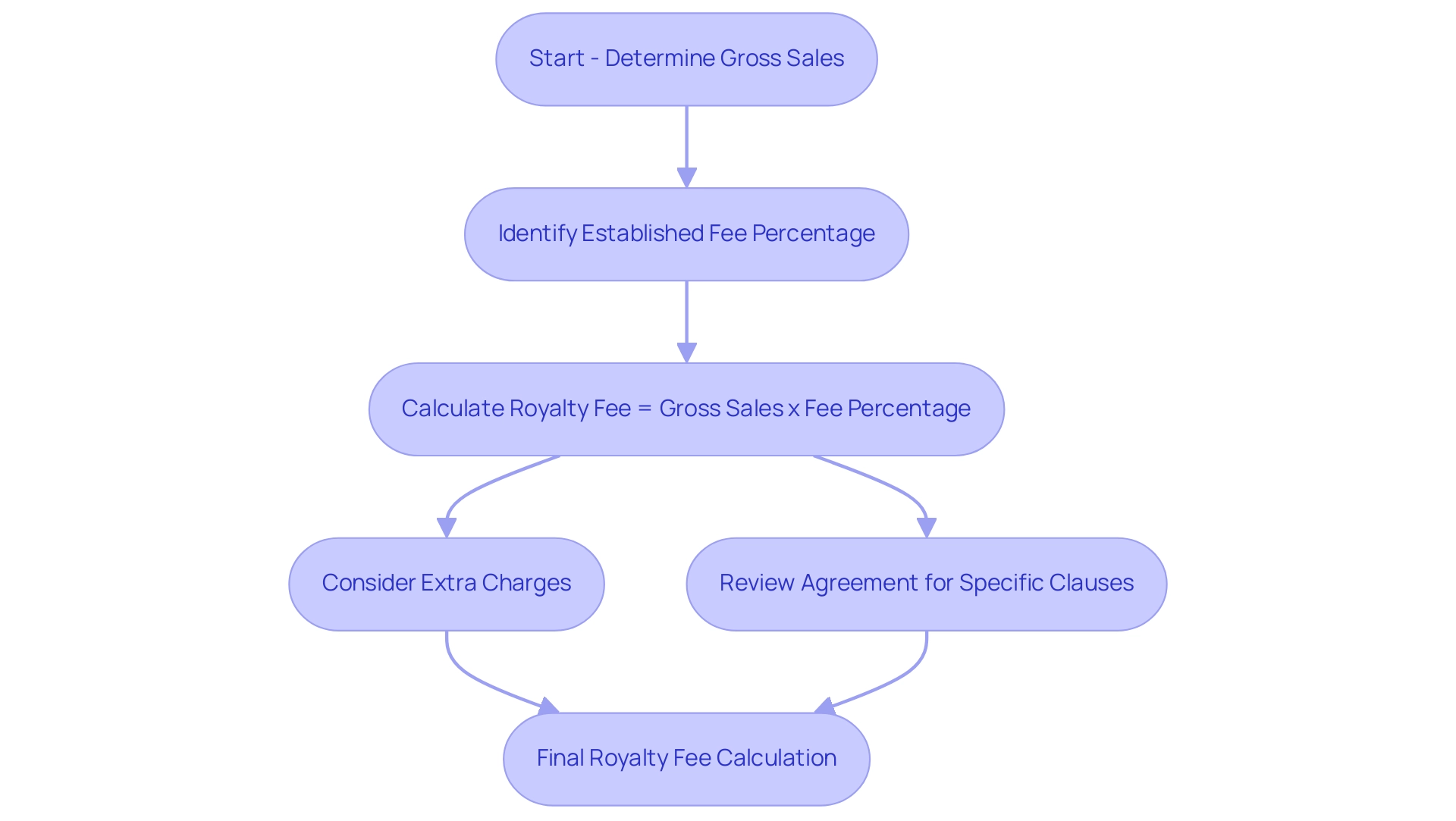
The Impact of Royalty Fees on Profit Margins
Royalty payments play a pivotal role in influencing a franchisee’s profit margins, particularly during the crucial early stages of operation when sales figures may still be building. High fixed expenses—like rent and utilities—can intensify the financial pressure when a portion of revenue is designated for licensing payments, potentially constricting available profits.
According to consultant Jane Doe, ‘Conducting a thorough break-even analysis is essential for business owners to understand the financial landscape and make informed decisions.’ This analysis assists franchise owners in determining the income needed to cover all costs, including those licensing charges.
Statistics indicate that businesses that conduct break-even analysis can enhance their likelihood of long-term profitability by as much as 30%. Moreover, citing case studies such as the one concerning Franchise X, which experienced a 15% decline in profit margins due to unexpected charges, can demonstrate the real-world effect of these expenses.
Comparing profit margins against industry benchmarks is essential as well. This practice not only offers insight into the competitiveness of the network’s charges but also guides pricing strategies and cost-control measures. By grasping the effects of licensing charges, business owners are better prepared to make strategic investments that improve their overall profitability in a dynamic market.
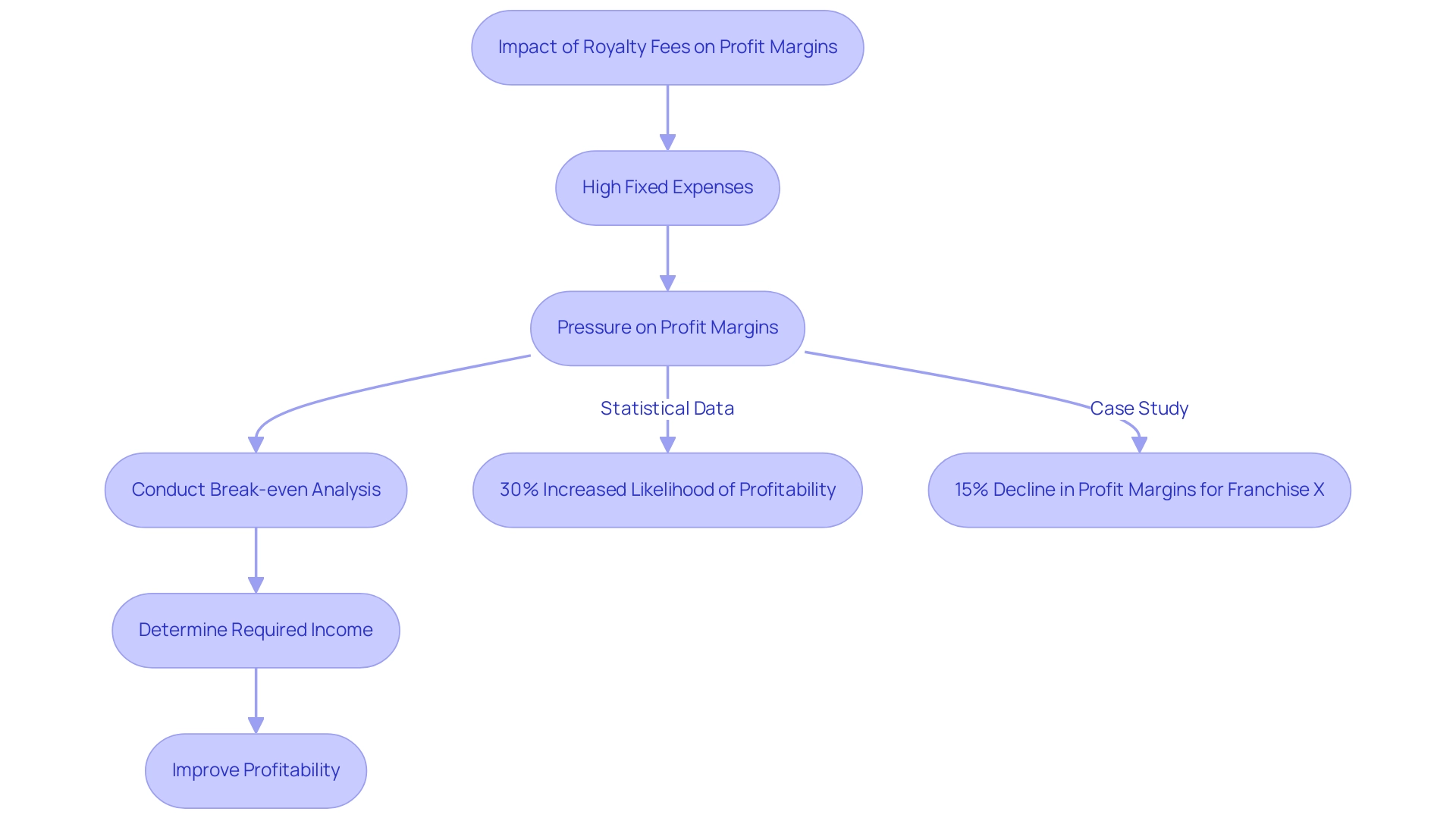
Negotiating Royalty Fees: What Franchisees Should Know
Entering into a business partnership agreement requires a keen understanding of the nuances surrounding licensing costs, which are often negotiable, particularly during the early stages or when setting up a new business. Franchisees should prioritize thorough research into industry standards and leverage relevant data to bolster their negotiation stance.
For example, research indicates that business owners who discuss their payment percentages can reduce their total expenses by anywhere from 5% to 15%, greatly affecting their profitability over time. Key considerations include:
- Previous sales data
- The competitive landscape
- The unique value proposition offered by the franchisor
David Lyons, a former employee of a business network, emphasizes the financial disparities that owners can face, noting that handymen often receive a mere fraction of the billed hourly rates, which can lead to significant financial strain.
Moreover, Colette Bell’s insights on starting an Ace Handyman Franchise highlight the importance of utilizing resources like AceHandymanFranchising.com to understand available territories and support options. If a franchisor stays rigid on the payment percentage, consider options like:
- Negotiating support with marketing costs
- Lower charges during the initial operational years
Cultivating a strong relationship with the franchisor can also yield more favorable terms, as trust and open communication are vital components of successful negotiations. Moreover, insights from specialists indicate that approaching discussions with confidence and preparedness can greatly enhance a franchisee’s bargaining power.
By incorporating these strategies, business owners can manage the intricacies of royalty costs and improve their opportunities for financial achievement.
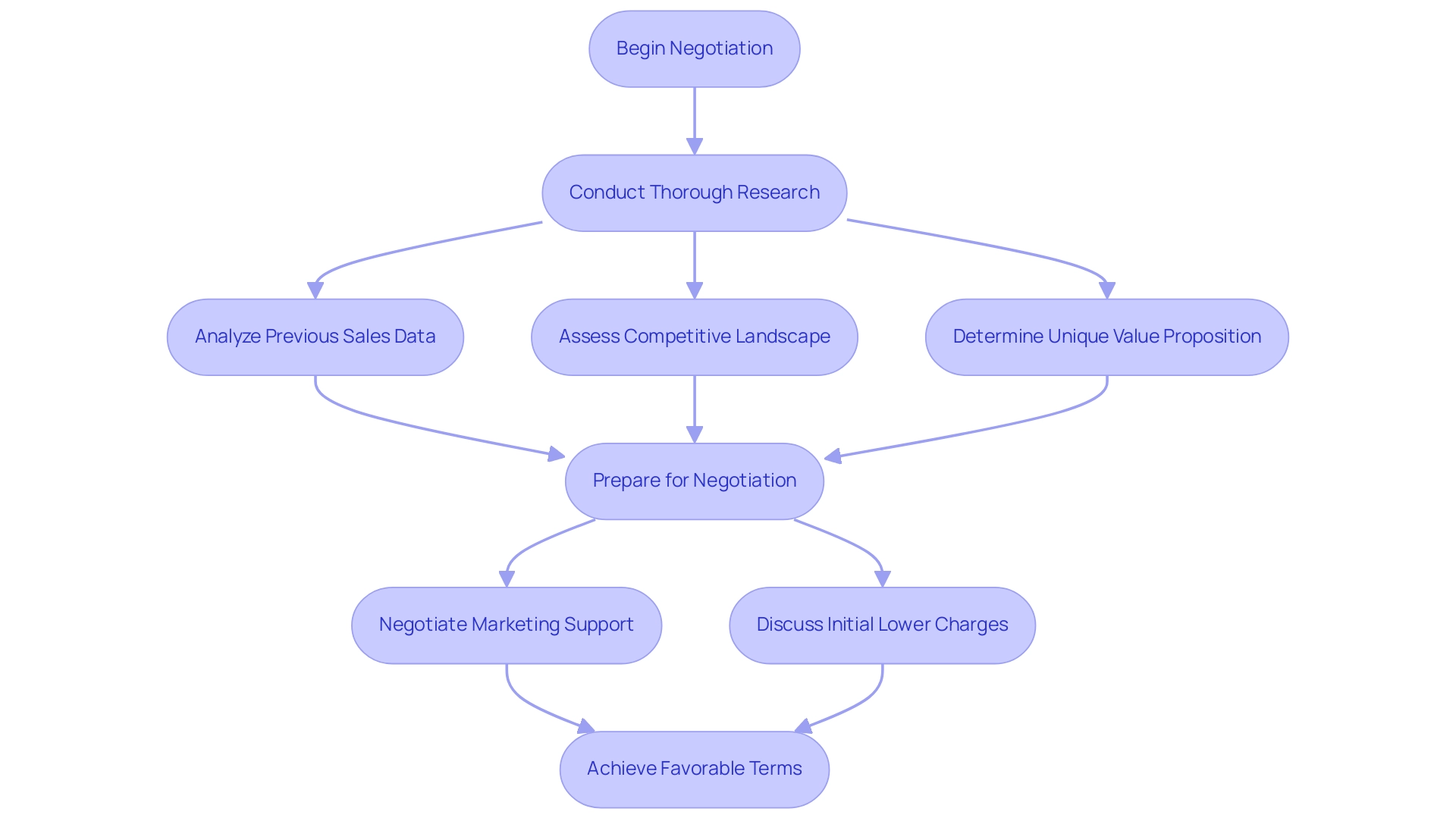
Budgeting for Franchise Fees: A Strategic Approach
Effective budgeting for franchise costs is crucial for ensuring long-term success and sustainability in the franchise business. To achieve this, business owners must develop a comprehensive budget that accounts for both fixed and variable costs inherent in running their operations. This budget should encompass:
- Projected sales
- Royalty fees
- Essential operational expenses such as:
- Inventory
- Staffing
- Marketing
Budgeting is the backbone of financial planning; thus, distinguishing between essential and discretionary expenses is vital to optimizing financial resources. Utilizing recent tools like QuickBooks and PlanGuru can aid franchisees in cash flow management, providing valuable insights into their financial strategy.
Additionally, understanding average operational costs—which can vary by franchise type—can provide a clearer financial picture. For example:
- Food service franchises averaging $100,000 in initial investment
- Retail franchises averaging $50,000
Integrating case studies, such as a successful franchisee who utilized a detailed budget to manage their royalty fees effectively, illustrates real-world applications of these strategies. For example, a franchisee who carefully balanced their operational costs with their discretionary spending was able to maintain a high quality of service while keeping their expenses in check.
Establishing a contingency fund is also a prudent strategy for managing unforeseen costs that may arise. To remain financially agile, business owners should regularly review and update their budgets based on actual performance metrics.
By adopting these best practices, including achieving balance and optimizing expenses without compromising quality of life, business owners can navigate the complexities of their financial landscape more effectively, positioning themselves for success in the competitive market.
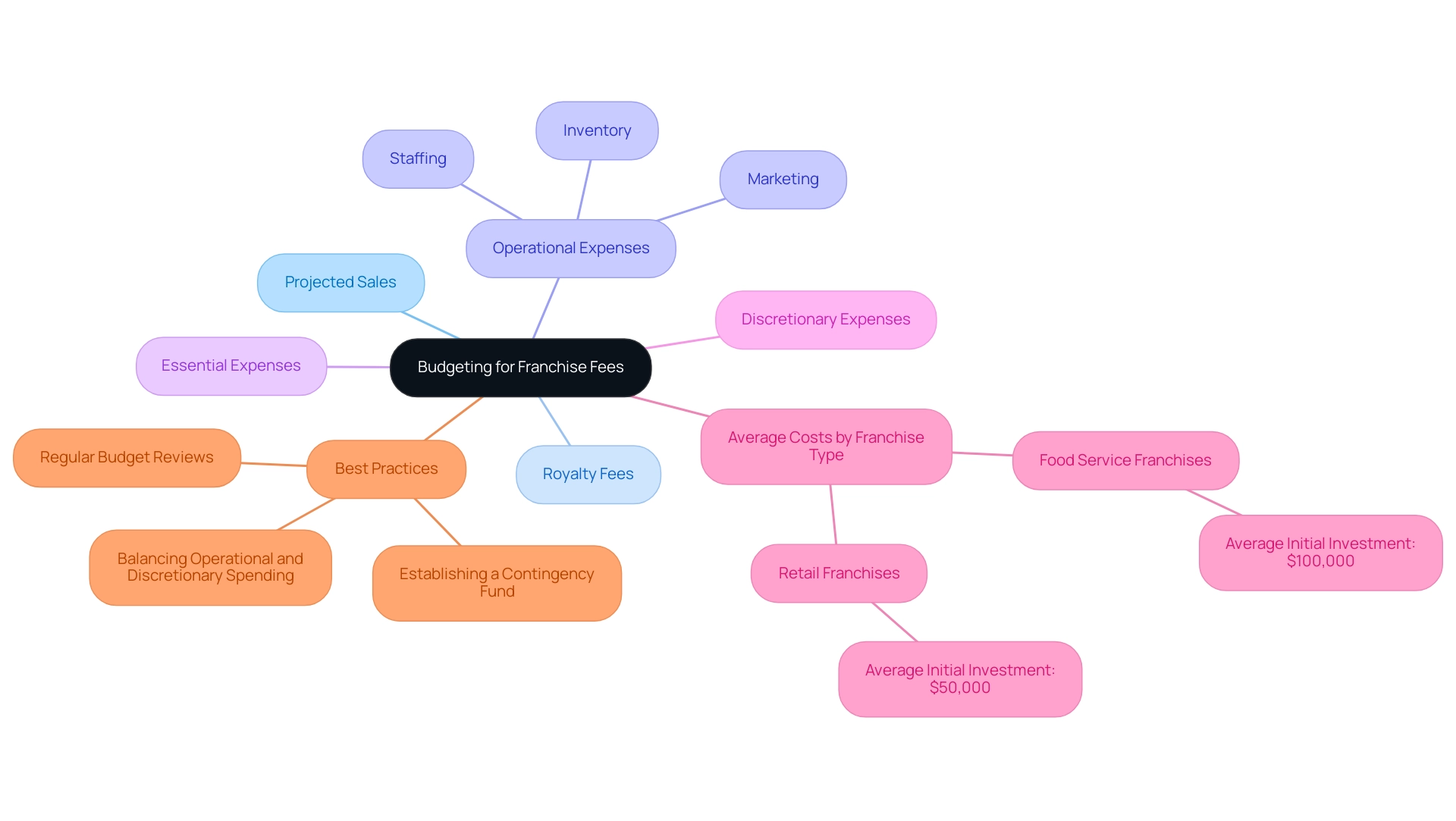
Reviewing the Franchise Agreement: Key Areas to Focus On
Navigating the intricacies of franchise agreements is essential for any franchisee. Among the critical areas to examine are the royalty fee structure and the payment schedules. It’s vital to understand the terms that govern fee increases and any additional assessments that may be imposed. Be cautious regarding clauses that outline the franchisor’s responsibilities in return for the payments you make, as well as those describing assistance and training for individuals involved in the franchise.
According to recent insights from the FTC, many business owners in franchises have expressed concerns about increasing fees, highlighting the necessity for careful review of these agreements. Involving a legal expert in business law can provide clarity on complex terms and help ensure that you fully comprehend your financial commitments before committing to the agreement.
Robert A. Heath, a partner in franchise law, emphasizes, “Most recently we represented a privately-held Fortune 500 company with over 5,000 company-owned and associated locations nationwide in litigation involving violation of non-compete covenants with employees and former associates,” underscoring the importance of thorough legal review. This proactive approach is not merely a precaution; it’s a strategic move to mitigate potential disputes and effectively manage your financial expectations.
Moreover, the FTC’s analysis uncovered that certain franchisors present riskier investments, as demonstrated in a recent case study where over 2,000 comments from franchisees, franchisors, and stakeholders were received, highlighting the need for vigilance in reviewing agreements. By staying informed and diligent in reviewing your franchise agreement, you can position yourself for a more successful franchise experience.
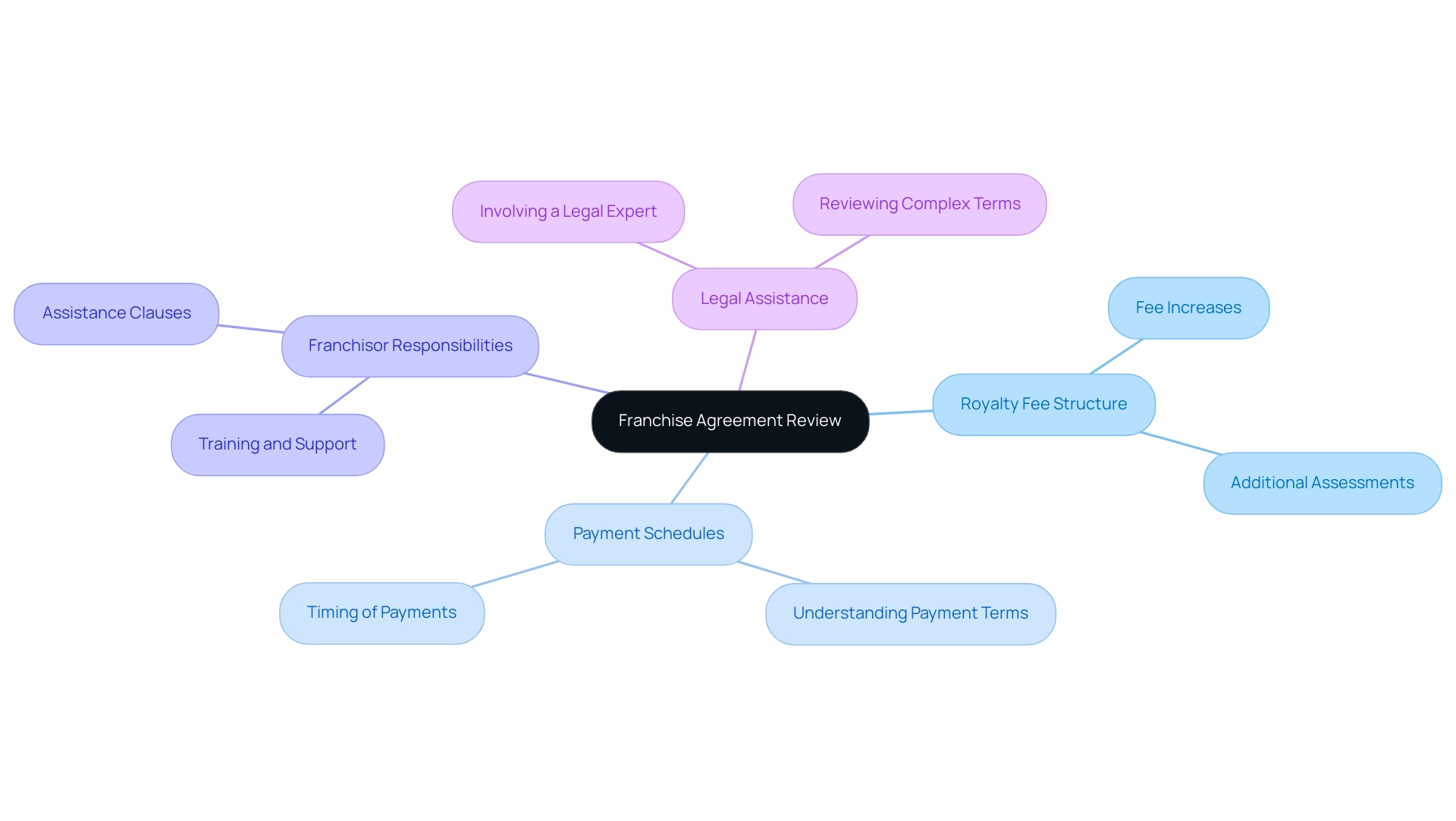
Conclusion
Understanding royalty fees is a fundamental aspect of franchise ownership that can significantly influence a franchisee’s financial success. From their calculation to their impact on profit margins and the negotiation process, these fees are integral to the franchise business model. As highlighted, the average royalty fees ranging from 5% to 7% in 2024 necessitate careful financial planning and strategic budgeting to ensure profitability and sustainability.
Franchisees must recognize that royalty fees are not merely costs; they contribute to vital brand management, marketing initiatives, and overall franchise support systems. By conducting thorough analyses, such as break-even assessments and market comparisons, aspiring franchise owners can better navigate the financial landscape and make informed decisions. Negotiating these fees, understanding the franchise agreement, and budgeting effectively are essential steps towards achieving long-term success in the competitive franchise market.
Ultimately, a proactive and informed approach to managing royalty fees can empower franchisees to maximize their profitability and enhance their business strategies. By embracing these principles, future franchise owners can position themselves for success, turning potential challenges into opportunities for growth and stability in their franchise endeavors.
Frequently Asked Questions
What are licensing charges in franchising?
Licensing charges, also known as royalty fees, are a percentage of a franchisee’s gross sales paid to the franchisor for the ongoing use of the brand and its associated support services.
What is the average range of royalty charges in franchising as of 2024?
Average royalty charges in franchising are anticipated to vary from 5% to 7%, although specific amounts can differ significantly based on the business model and industry sector.
Why is it important for prospective franchisees to understand royalty charges?
Understanding royalty charges is crucial because they directly influence profitability and the overall financial well-being of the enterprise. These charges support essential marketing initiatives and brand development activities that enhance the network’s value.
How can royalty charges impact a franchisee’s profitability?
Royalty payments can significantly affect profit margins, especially during the early stages of operation when sales may still be building. High fixed expenses can intensify financial pressure when a portion of revenue is designated for licensing payments.
What factors should franchisees consider when calculating royalty fees?
Franchisees should consider the established fee percentage, their gross sales, any extra charges like marketing contributions, and potential sales fluctuations that can directly affect total royalty fees.
How can franchisees manage their cash flow regarding royalty fees?
Franchisees can manage cash flow by understanding the fee calculation process, reviewing their agreements for specific clauses that influence fees, and conducting break-even analyses to determine the income needed to cover all costs.
Are royalty fees negotiable for franchisees?
Yes, royalty fees are often negotiable, particularly during the early stages of setting up a new business. Franchisees should research industry standards and leverage relevant data to negotiate better terms.
What budgeting practices should franchisees adopt to ensure financial success?
Franchisees should develop a comprehensive budget that accounts for projected sales, royalty fees, and essential operational expenses. They should also establish a contingency fund for unforeseen costs and regularly review and update their budgets based on actual performance.
What should franchisees focus on when reviewing franchise agreements?
Franchisees should examine the royalty fee structure, payment schedules, terms governing fee increases, and any additional assessments. It’s also important to understand the franchisor’s responsibilities in return for payments and seek legal advice for clarity on complex terms.
How can franchisees position themselves for a successful franchise experience?
By staying informed and diligent in reviewing franchise agreements, understanding financial commitments, and cultivating strong relationships with franchisors, franchisees can better navigate the complexities of their financial landscape and improve their chances of success.


